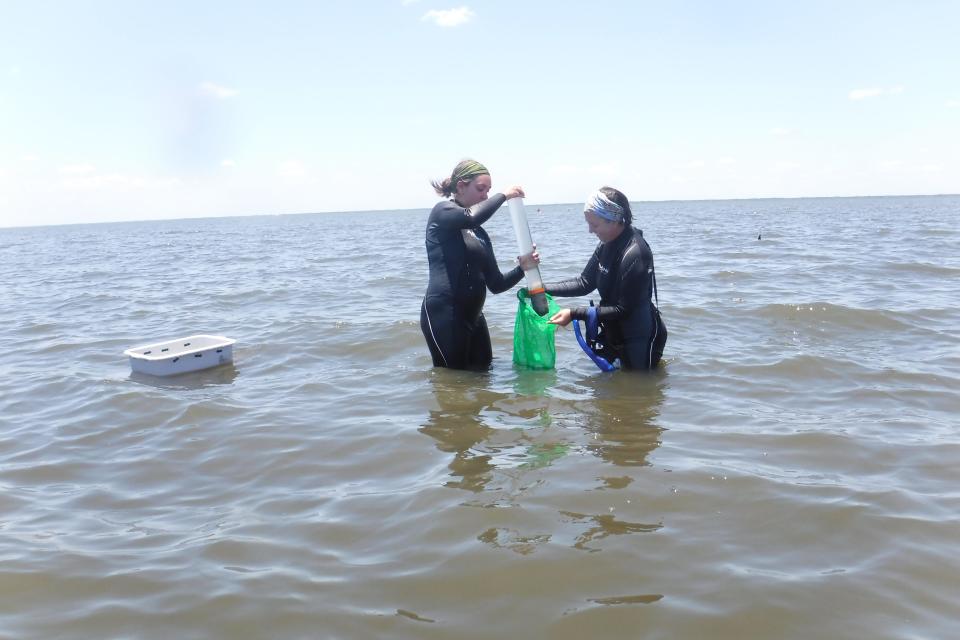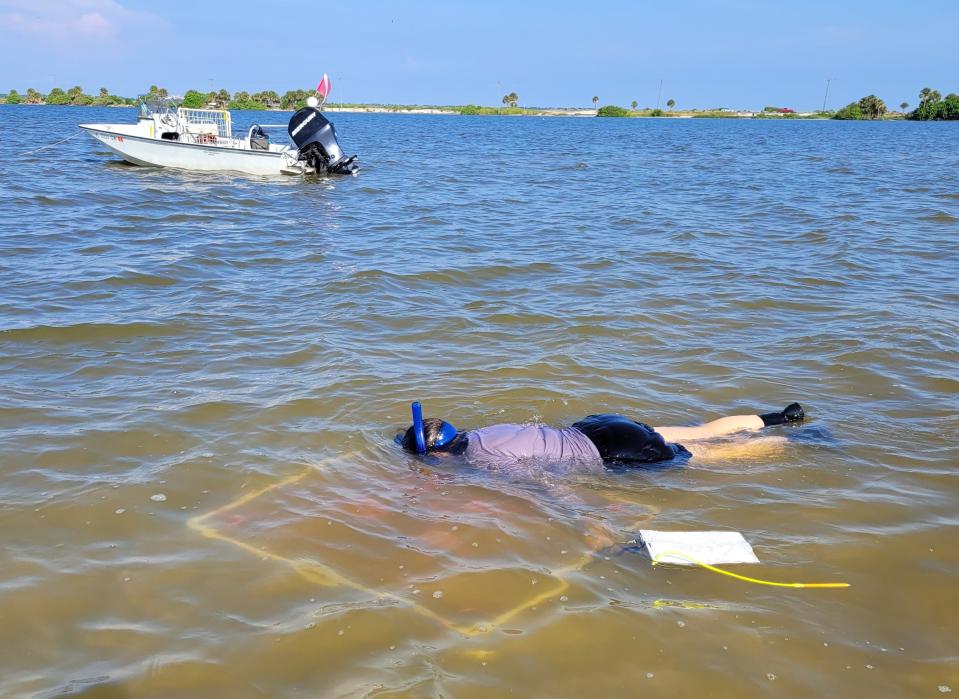Indian River Lagoon seagrass sprouts back from record low
Seagrass, the critical foundation of the Indian River Lagoon's ecosystem, is showing signs of recovery years after algae blooms decimated the aquatic plants in the estuary.
There is still a long way to go, though, scientists warn.
Lauren Hall has seen the bottom. For more than a decade, she snorkeled over barren former seagrass beds. Now things are finally looking — and growing — up after years of bottoming out in the Indian River Lagoon.
"It's really so different in different areas," said Hall, an environmental scientist with the St. Johns River Water Management District. "It's really hard to pick a representative spot. It really is so site-specific."

More: Should Brevard renew lagoon tax? Conservationists: It's time to double down on the sales tax to help 'Save Our Lagoon'
The upshot lagoon-wide, though: seagrass acreage grew back by 24% in just two years, to 24,521 acres in 2023, according to the district's most recent field surveys.
But that's up from a record low of 19,821 acres in 2021. And it's also only 30% of the 80,434 acres that grew in 2007, a level biologists say makes for healthy lagoon.
Only two years after that peak seagrass target growth was reached, cold snaps and algae blooms wiped out more than half the lagoon's most important plant, and 90% of its coverage in some spots.
"We are seeing some evidence of recovery in the lagoon," Dean Dobberfuhl, a bureau chief with the St. Johns River Water Management District, told the district's governing board Tuesday. "The recovery is uneven, though. Most of the expansion is occurring in the northern half of the lagoon system."
$5 billion and two decades to cure the lagoon

Seagrass is the linchpin of the lagoon's ecology. Fish, shrimp, sea turtles and crabs are among the thousands of species that rely upon the bottom habitat to hide, feed and breed.
But resource managers say it will take another $5 billion and 20 years to save the stressed ecosystem. Advocates say the time and expense are worth it: The lagoon brings $7.6 billion annually to the six counties that border the waterway. It's one of several reasons why Brevard supporters say they want a local lagoon sales tax back on the ballot before the tax expires in 2026. The 10-year tax is expected to raise more than $540 million for muck dredging, sewage and stormwater fixes and other lagoon cleanup projects.
The sales tax funds the "Save Our Lagoon Project Plan," created by Brevard County's Natural Resources Management Department and consultants, includes organic muck removal via dredging; stormwater, sewer plant and septic system upgrades; improved fertilizer management; oyster reef restoration; public education; and more.
A 14-member citizen oversight committee meets monthly to decide which lagoon-tax projects to recommend that the county fund.
More: Concrete, clams to guard causeway Large concrete 'pyramids,' clams and seagrass to guard Max Brewer Causeway in Titusville
A 'balder,' less-lively lagoon than 30 years ago, but recovering
Hall's been peering into the lagoon for 28 years. What she sees today is a much balder, patchier "lagoon-scape" than in 1996, when she began snorkeling the estuary's grass beds for the water management district. She seldom sees the seahorses and spider crabs she once did.
But anecdotally, she now notices more baitfish, manatees and other lagoon life as the seagrass grows more lush. "I'm seeing a lot more fish activity than I saw a couple years ago," Hall said. "We have seen a lot of manatees."
The lagoon seagrass losses that began in 2010 wiped out decades of progress, when consecutive cold snaps and algae "superblooms" smothered the grass beds.
"The more stressors you have the harder it is for the seagrass to maintain," Hall said.
As the grass slowly grows back, Hall and other scientists plan to figure out where there are ample seeds and good enough water quality for seagrass to grow back, using a grant from Florida Department of Environmental Protection. The project includes the water management district, the Florida Institute of Technology, Hubbs-SeaWorld Research Institute and the Smithsonian Institution.
They'll document the distribution of seeds throughout the lagoon for the most common seagrasses to see which sites are best for seagrass restoration, based on sediments, water quality and other factors.
Meanwhile, conservation biologists hope the grass keeps growing, and hurricanes will spare the Space Coast long enough for the grass to establish.
"We're right smack in growing season right now," Hall said.
Contact Waymer at (321) 261-5903 or jwaymer@floridatoday.com. Follow him on X (Twitter) @JWayEnviro.
This article originally appeared on Florida Today: Indian River Lagoon seagrass sprouts back from record low

